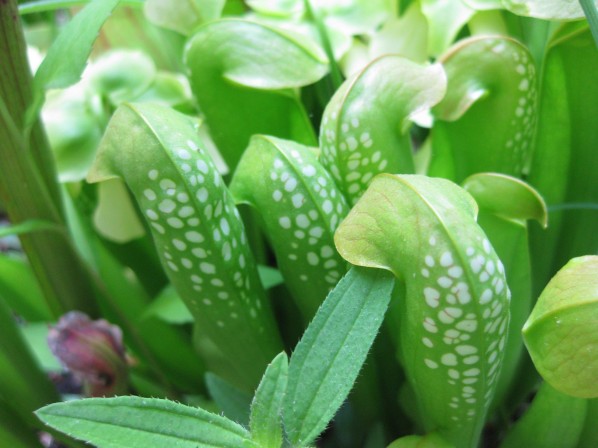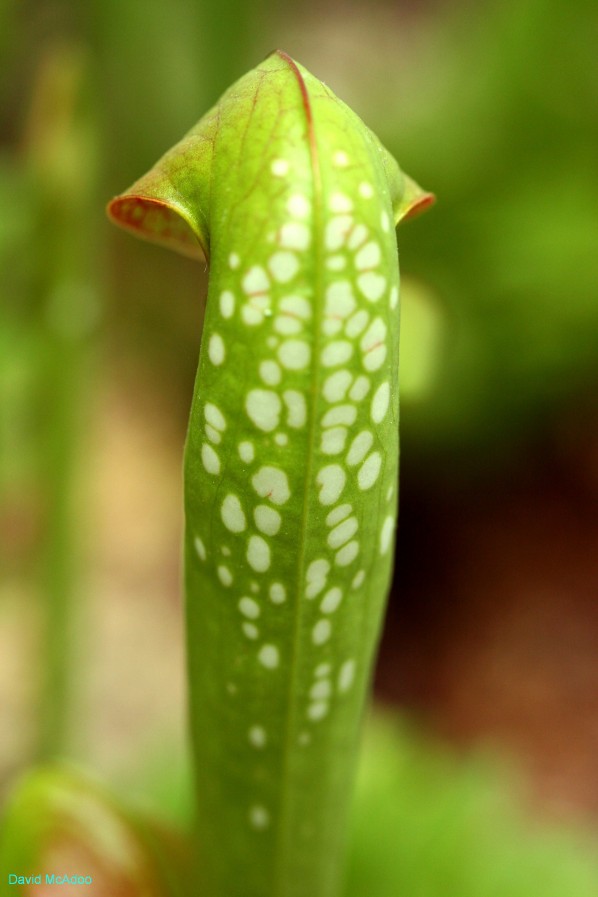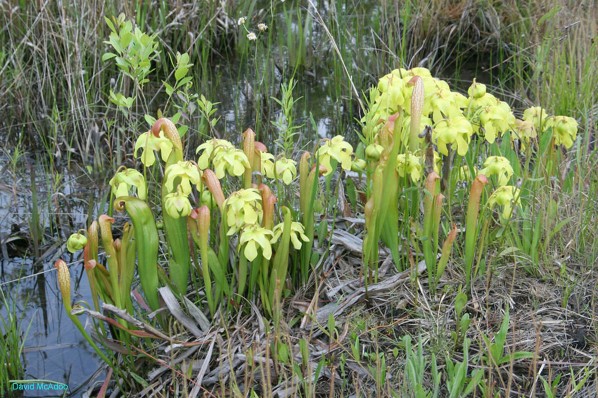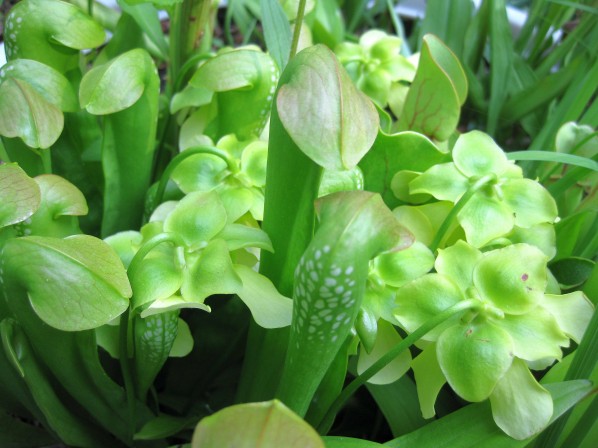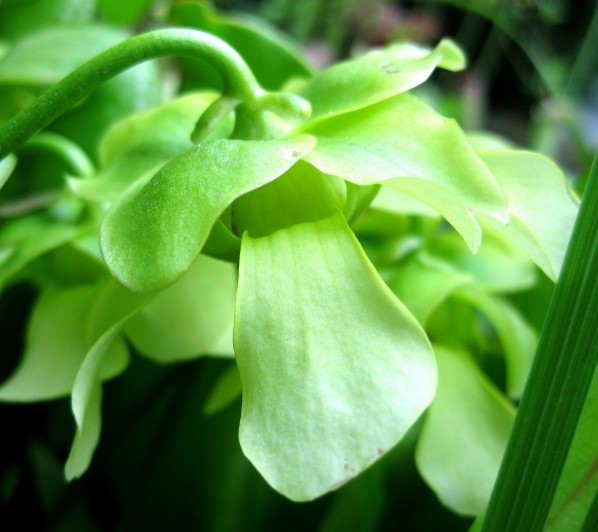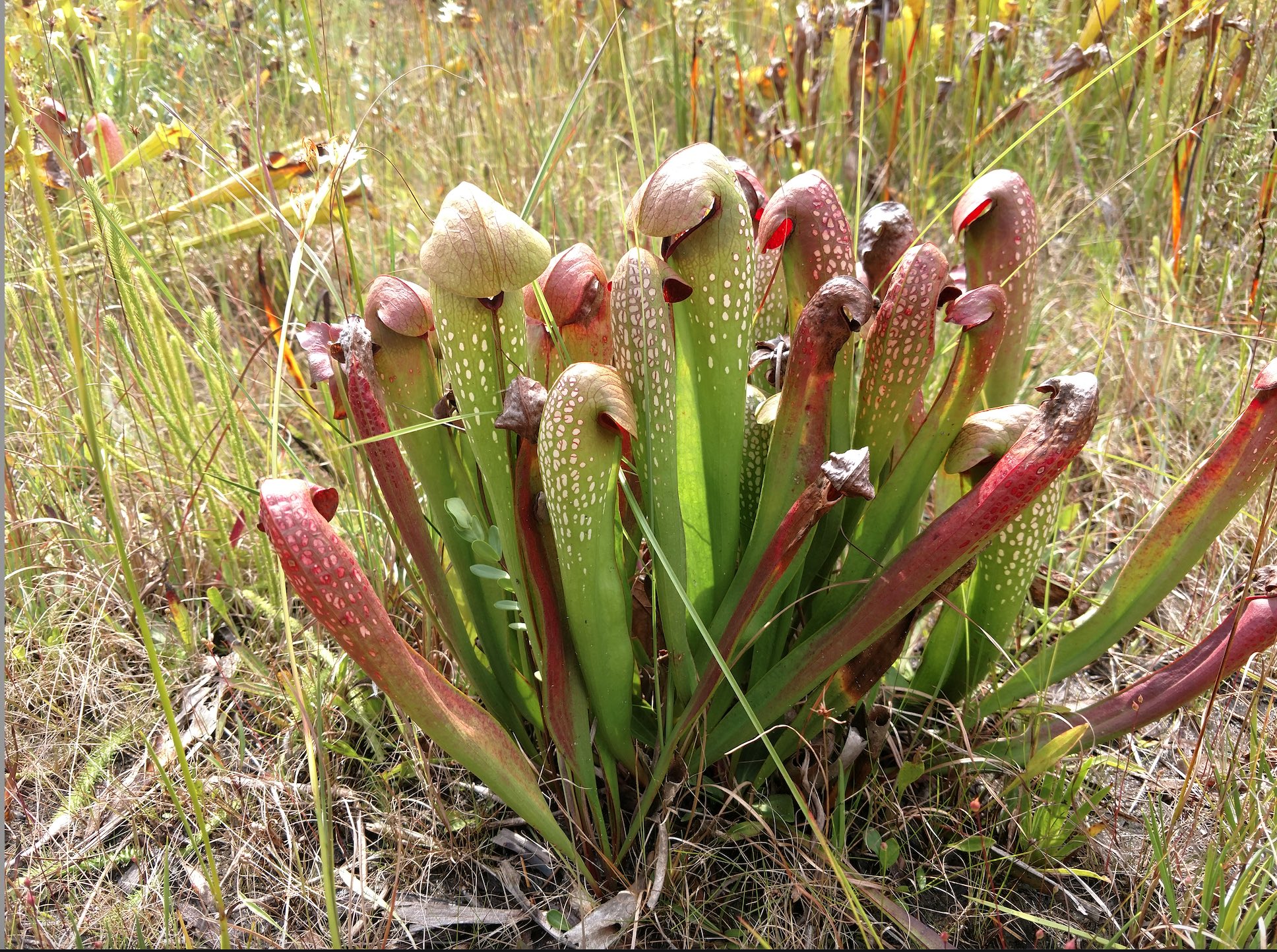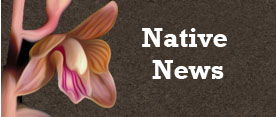NC Native Plant Society:
Plant Details
Sarracenia minor var. minor
Hooded Pitcherplant
Scientific Name: |
Sarracenia minor var. minor |
|---|---|
Genus: |
Sarracenia |
Species Epithet: |
minor |
Common Name: |
Hooded Pitcherplant |
Plant Type |
Herb/Wildflower |
Life Cycle |
Perennial |
Plant Family |
Sarraceniaceae (Pitcherplant Family) |
Native/Alien: |
NC Native |
Size: |
1-3 ft. |
Bloom Color(s): |
Yellow |
Light: |
Sun - 6 or more hours of sun per day |
Soil Moisture: |
Wet |
Bloom Time: |
March, April, May |
Growing Area: |
Sandhills, Coastal Plain |
Habitat Description: |
Wet savannas. Rare in NC Coastal Plain. |
Leaf Arrangement: |
Basal |
Leaf Retention: |
Semi-evergreen |
Leaf Type: |
Leaves veined, not needle-like or scale-like |
Leaf Form: |
Simple |
Life Cycle: |
Perennial |
Wildlife Value: |
Has some wildlife value |
Landscape Value: |
Not Recommended for home landscapes |
State Rank: |
S2: Imperiled (*Key) |
Global Rank: |
G_T_: Subspecies or Variety Rank (add status to NOTES section) (*Key) |
State Status: |
E: Endangered, Exploited (*Key) |
Notes: |
Carnivorous -- See also The Carnivorous Plant FAQ, courtesy of The International Carnivorous Plant Society |
|
Plants Tom Harville |
|
|
Single Plant David McAdoo |
|
|
In Bloom David McAdoo |
|
|
Closer to Blooms Tom Harville |
|
|
Bloom Close Up Tom Harville |
|
|
The curved hood makes the pitcher opening almost completely covered. New Hanover County, NC, cultivated
Larry Mellichamp |
|
Links: |
|
back to top
go to plant details search
go to plant images search
go to gallery home
back to Initial s Gallery
back to orchids
back to Carnivorous Plants
back to Trilliums

